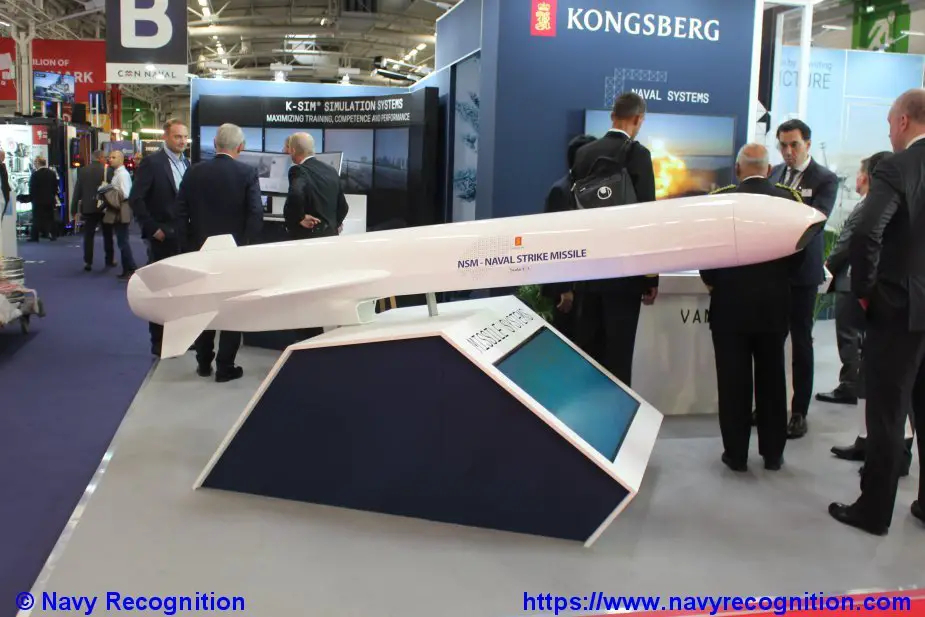Breaking news
Kongsberg to supply Naval Strike Missile to Norwegian Navy.
According to a PR published by Kongsberg Defence & Aerospace on December 22, 2022, the company has signed a supplemental agreement contract with the Norwegian Defence Material Agency (NDMA) for the ongoing procurement of Naval Strike Missile (NSM) for deliveries to the Norwegian Navy.
Follow Navy Recognition on Google News at this link
 Naval Strike Missile at Euronaval 2022, Paris. (Picture source: Navy Recognition)
Naval Strike Missile at Euronaval 2022, Paris. (Picture source: Navy Recognition)
The value of the contract is MNOK 604 and will increase the total number of delivered NSMs to the Norwegian customer. This contract for additional NSMs is part of the German-Norwegian collaboration for procurement of NSM for the two nations.
KONGSBERG appreciates the strong cooperation with the NDMA team and looks forward to continuing these efforts as we focus on the deliveries to the Norwegian Navy.
About the Naval Strike Missile
The state-of-the-art design and use of composite materials is meant to give the missile sophisticated stealth capabilities. The missile will weigh slightly more than 400 kg (880 lb) and have a range of more than 185 km (115 mi; 100 nmi).
NSM is designed for littoral waters ("brown water") as well as for open sea ("green and blue water") scenarios. The usage of a high strength titanium alloy blast/fragmentation warhead from TDW is in line with the modern lightweight design and features insensitive high-explosive. Warhead initiation is by a void-sensing Programmable Intelligent Multi-Purpose Fuze designed to optimise effect against hard targets.
The target selection technology provides NSM with a capacity for independent detection, recognition, and discrimination of targets at sea or on the coast. This is possible by the combination of an imaging infrared (IIR) seeker and an onboard target database. NSM is able to navigate by GPS, inertial and terrain reference systems.
After being launched into the air by a solid rocket booster which is jettisoned upon burning out, the missile is propelled to its target in high subsonic speed by a turbojet sustainer engine—leaving the 125 kg multi-purpose blast/fragmentation warhead to do its work, which in case of a ship target means impacting the ship at or near the water line.
An NSM coastal battery consists of three missile launch vehicles, one battery command vehicle, three combat command vehicles, one mobile communication center, one mobile radar vehicle with TRS-15C radar, one transport and loading vehicle, and one mobile workshop vehicle.
Each MLV carries 4 missiles and can be connected to the CCV by optical fiber or radio up to 10 km (6.2 mi) away; up to 6 launchers with 24 missiles can be netted together at once. When installed on ships, NSMs can be deck-mounted in packs of one, two, three, four, or six launchers.
Total installation weight, including electronics and cabling, is 8,600 lb (3,900 kg) for 4 launchers, 17,000 lb (7,700 kg) for 8 launchers, and 26,000 lb (12,000 kg) for 12 launchers.



















